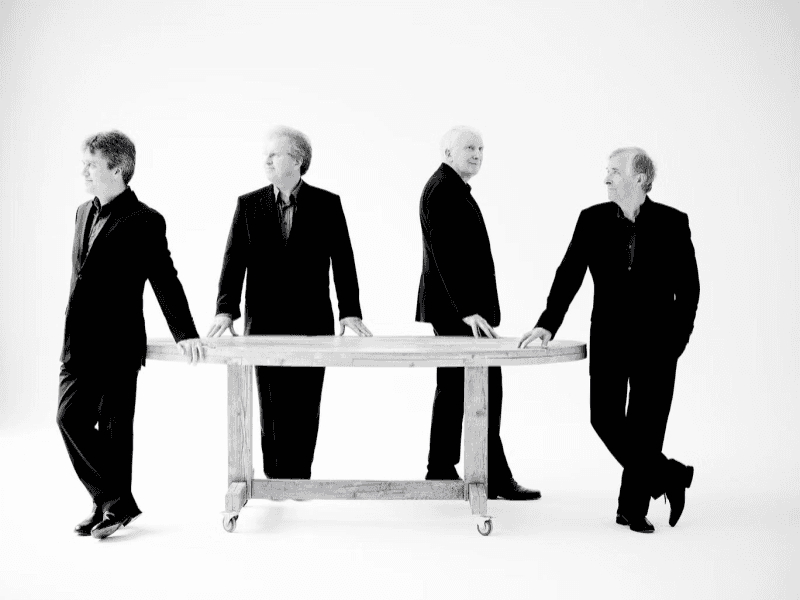자신만의 합창단 만들기: 키츠 AI와 함께 하는 합창 실험
작성자
게시됨
2024년 6월 25일
약 10년 전, 나는 브루클린에 살면서 가능한 한 많은 음악을 접하고 있었습니다. 어느 날, 나는 Earwax Records에 들어가서 약간 거리를 두고 있는 딜러에게 특별한 무언가를 추천해줄 수 있는지 물었습니다. 최신 아방가르드 노이즈 앨범을 기대했지만, 유명한 ECM 레코드 레이블의 영국 아카펠라 4중주단인 Hilliard Ensemble의 앨범을 받았을 때 충격을 받았습니다. 그들의 천상의 화음은 벡포드 애비뉴의 힙스터들 사이에서 이상하게 느껴졌지만, 그들의 천상의 사운드는 나를 즉시 사로잡았습니다.
Kits AI와 함께 AI 강화 합창단 탐험하기
Hilliard Ensemble에서 영감을 받아, 나는 VST에서 발견되는 표준 “합창” 프리셋을 넘어 Kits.ai가 제공할 수 있는 것들을 탐색하기 위해 나섰습니다. 내 목표는 일반적인 박스형 합창음과 비교했을 때 더 많은 개성, 풍부함, 진정성을 찾는 것이었습니다.
실험
DAW 설정하기: 내 DAW에서, 나는 Kontakt의 인스턴스를 열고 “Choir [a]”라는 프리셋을 기반으로 사용했습니다. 짧은 멜로디 조각을 만든 후, 나는 짧은 범위 내에 포함된 다양한 단일 음의 세그먼트를 솔로’ing 하여 개별 파트를 식별했습니다.
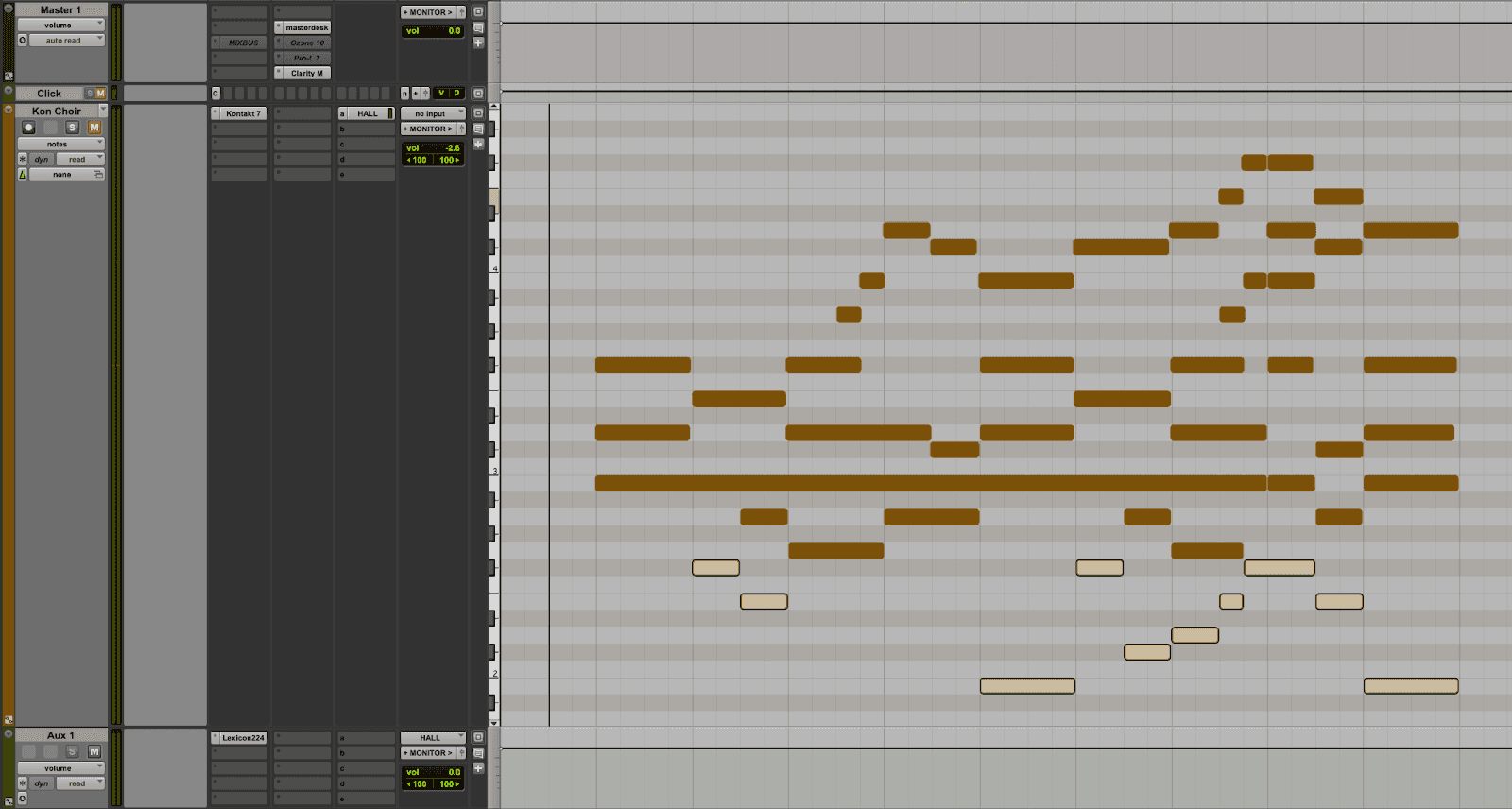
2. 보컬 스템 생성하기: 프리셋의 리버브를 낮춘 후, 나는 각 파트를 개별 단음 트랙으로 바운싱하기 시작했습니다. 총합적으로, 내 합창단은 각각 고유한 음범위를 차지하는 7개의 다양한 목소리로 구성되었습니다.
3. Kits.ai에 업로드하기: 개별 보컬 스템이 업로드 준비가 되어 그립으로 Kits.ai에 방문하여 왼쪽 메뉴에서 “변환”을 선택했습니다.

그 후 “Select A Voice” 옆의 “+” 기호를 클릭했습니다.
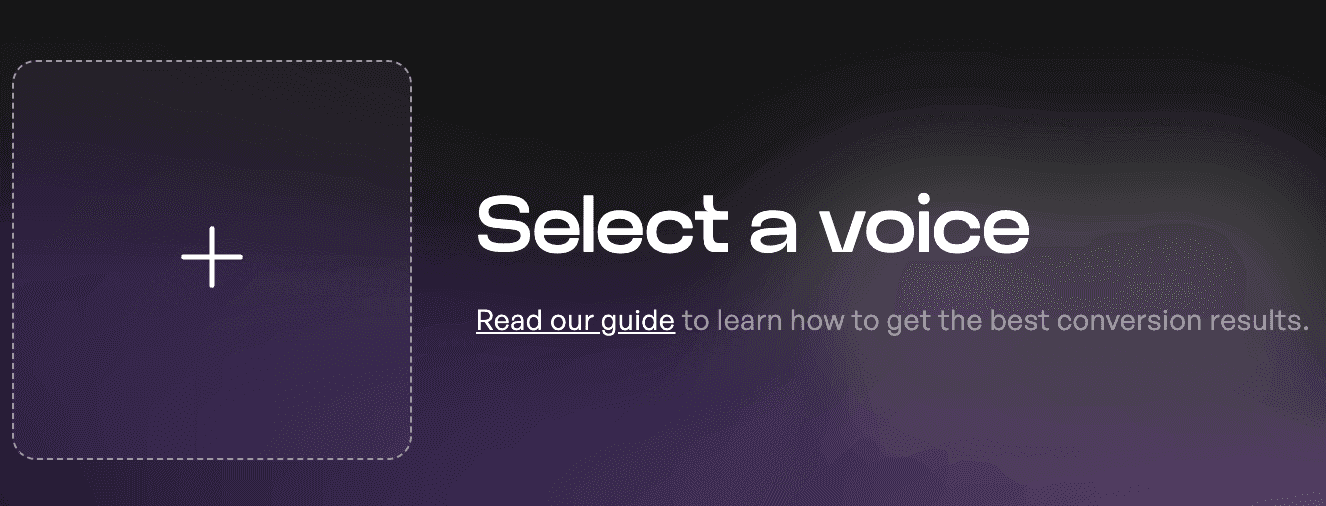
보컬리스트 선택하기: Kits Community Voices의 새 롤아웃과 Kits Earn 프로그램을 통해, 나는 이 새로운 보컬리스트들이 제공할 수 있는 것들을 검토하기를 고대했습니다. Kits Earn에 참여함으로써, 아티스트는 자신의 목소리 모델을 업로드하고 그 모델이 사용될 때마다 수익을 얻을 수 있으며, 이는 새로운 수익원을 창출하고 목소리 뒤에 있는 재능이 인식되고 보상받도록 합니다. 많은 회사들이 아티스트의 동의 없이 모델을 훈련시키는 것에 대해 완전한 무관심을 보이는 시대에, 윤리적 AI에 투자하는 것은 지속 가능한 창작 생태계를 촉진하고 예술 공동체 전체에서 이해할 수 있는 불안이 고조되는 시기에 마음의 평화를 제공합니다.

합창단 구성하기: 나는 가장 높은 음역대에서 편안한 보컬리스트로부터 시작하여 합창단을 조합하기로 결정했습니다. 잠재 후보를 드러내기 위해, “Pitch Range” 버튼에서 드롭다운 메뉴를 선택하고 높은 범위로 스크롤했습니다.
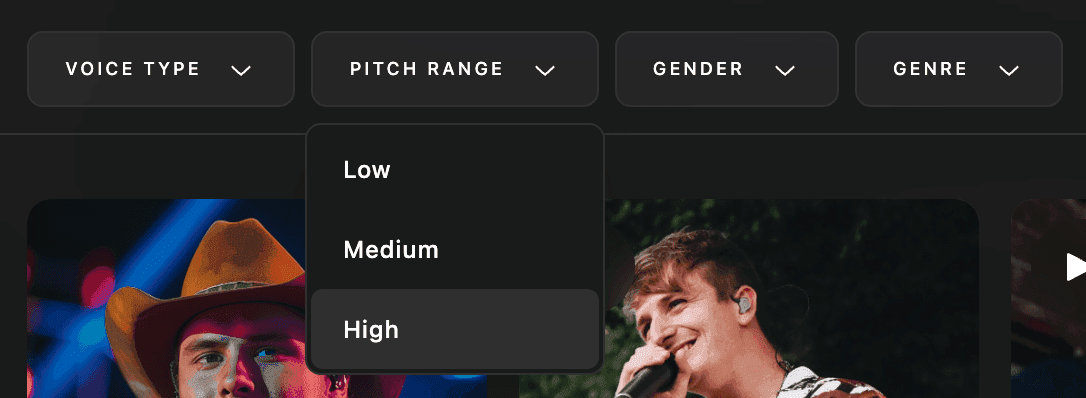
이로 인해 나의 검색은 다섯 명의 잠재적인 가수로 좁혀졌습니다. 이 높은 범위에서 여성 보컬리스트가 있는 것이 적절해 보였으므로, 나는 먼저 “Keighty”를 선택했습니다. 그녀는 “팝과 R&B에 적합한 부드러운 목소리”로 설명되었습니다. 다음 단계는 내 최고 보컬 스템을 “Audio Input” 박스로 끌어다 놓는 것이었습니다. 이 시점에서 이 부분이 실제로 Keighty의 편안한 범위를 벗어난다는 알림을 받았습니다.
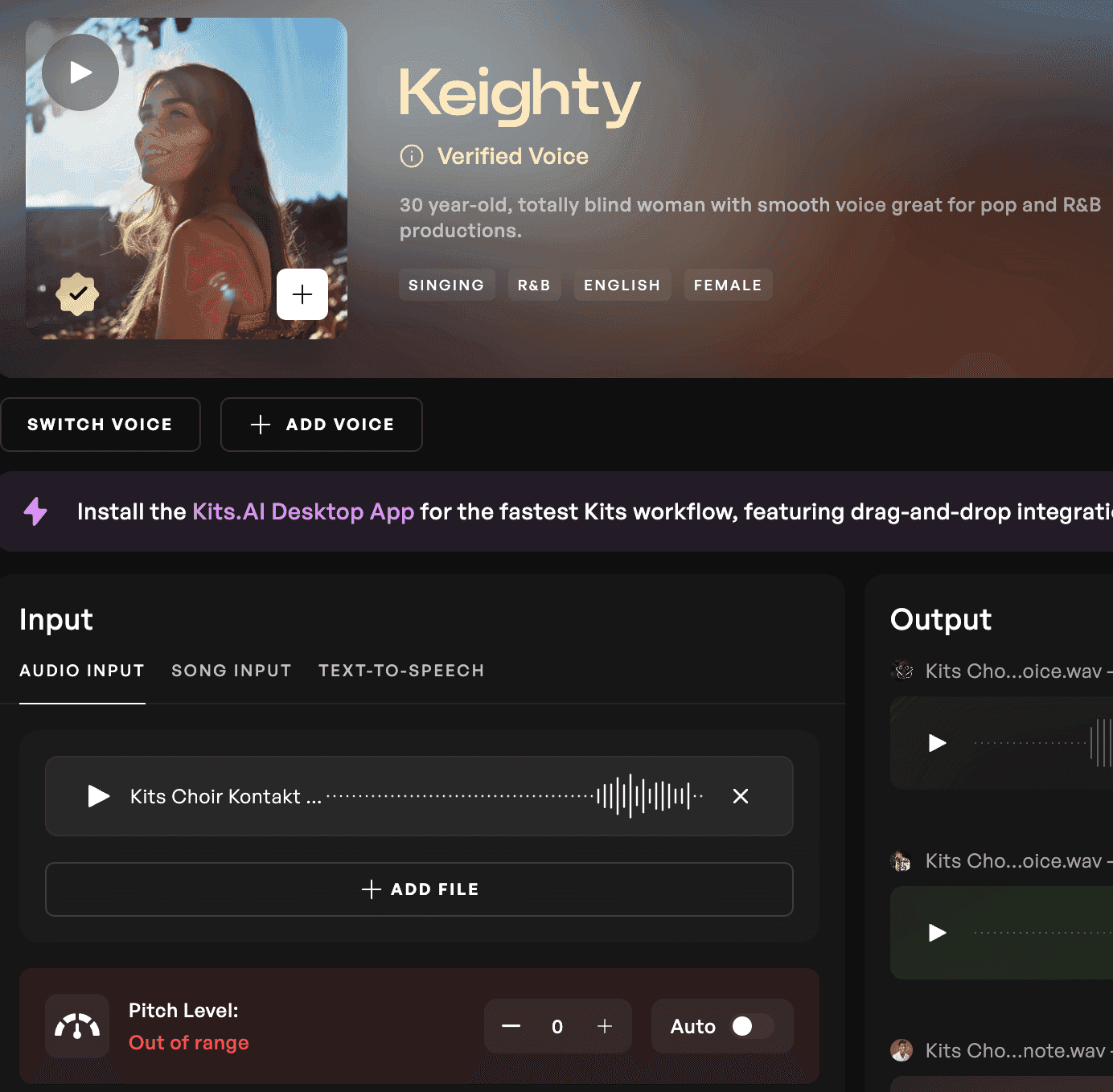
다른 가수를 오디션하기 위해, 나는 단순히 “Switch Voice”를 눌러 “Lena Xena”를 선택했습니다. 이제 Pitch Level에서 “Okay”로 확인했습니다.
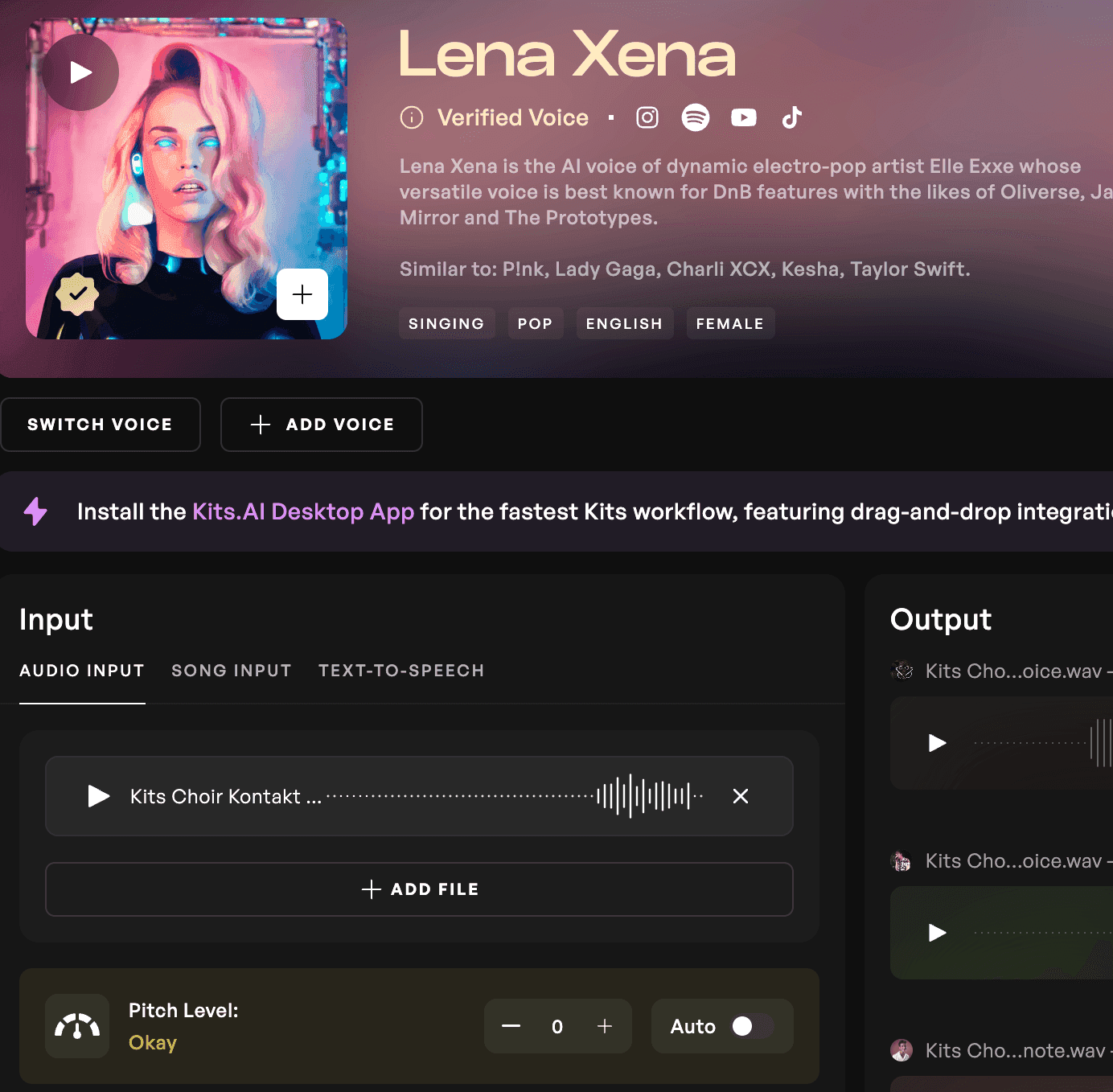
Lena가 이제 가장 높은 음을 커버할 위치에 있게 되자, 나는 “Convert” 버튼을 눌렀고 잠시 후 나의 합창단의 첫 번째 새로운 보컬 트랙을 얻었습니다. 나는 각 스템에 대해 이 오디션 과정을 계속 진행하며 다양한 배경과 음악 스타일의 가수들로 구성된 다채로운 컬렉션을 조립했습니다. Kontakt로 제작한 비교 트랙이 각 음이 여러 명의 가수를 포함하고 있는 것처럼 들렸기 때문에, Kits의 로열티 없는 보이스 모델 컬렉션으로 각 파트를 복제하는 것이 가장 좋다고 결정했습니다.
합창단 마무리하기
마지막으로, 나는 모든 새로운 스템을 내 DAW로 가져왔습니다. 공정한 비교를 위해, 나는 내장된 Kontakt 리버브가 음소거되어 있는지 확인하고 원본 Kontakt 조각과 나의 새로운 스템을 동일한 리버브인 UAD Lexicon 224로 보냈습니다. 이는 풍부한 홀 알고리즘으로 잘 알려져 있습니다.
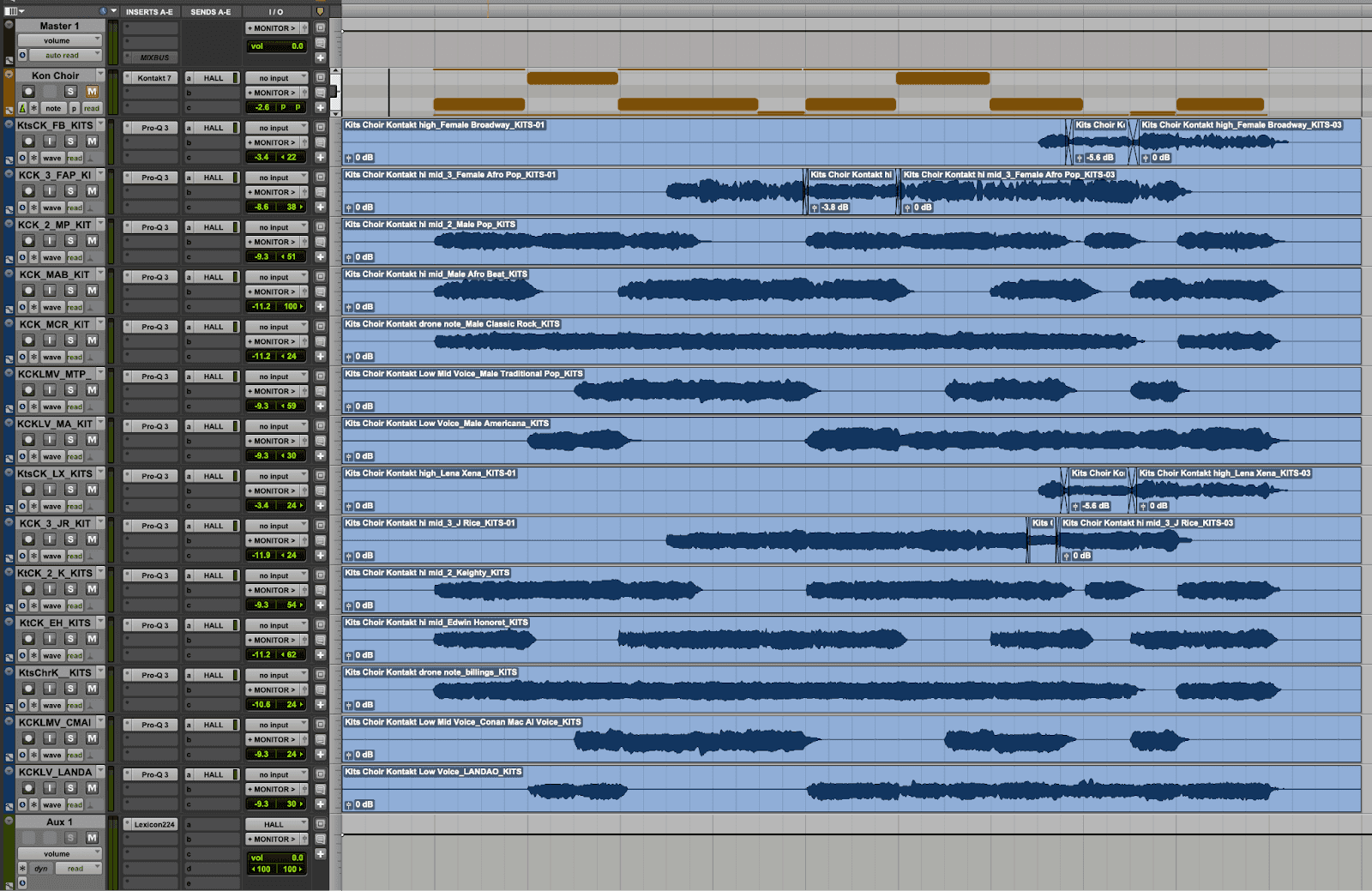
약간의 EQ 조정과 패닝 후, 진실의 순간이 도래했습니다. 최종 결과는 인상적이었습니다. 나의 Kits AI 합창단은 독특한 보컬 특성으로 풍부해져, Kontakt 버전에서는 일치할 수 없는 유기적인 사운드를 제공합니다. 가사가 없어도 각 보컬리스트의 개성이 완전히 독특한 합창을 만드는 데 기여했습니다.
비교 듣기
결론
비록 내가 Hilliard Ensemble의 초자연적인 높이에 도달하지는 못했지만, Kits.ai와 함께한 이 실험은 개성과 진정성이 풍부한 합창을 만드는 가능성을 보여줍니다. 당신이 영화를 점수 매기거나, 히트 곡을 제작하거나, 아카펠라 그룹을 위해 작곡하든, Kits.ai는 모든 합창 제작에 귀중한 자산입니다. 비범한 무언가를 창조하고, 사운드 팔레트를 확장하며, Kits AI와 함께 사운드 가능성을 탐색하세요. 또한 이 기술을 가능하게 하는 음악가들을 지원하고 혜택을 받을 수 있도록 Community Voices와 Kits Earn를 확인하는 것을 잊지 마세요.
-SK
Sam Kearney는 콜로라도주 덴버에 기반한 프로듀서/작곡가/사운드 디자이너입니다.
